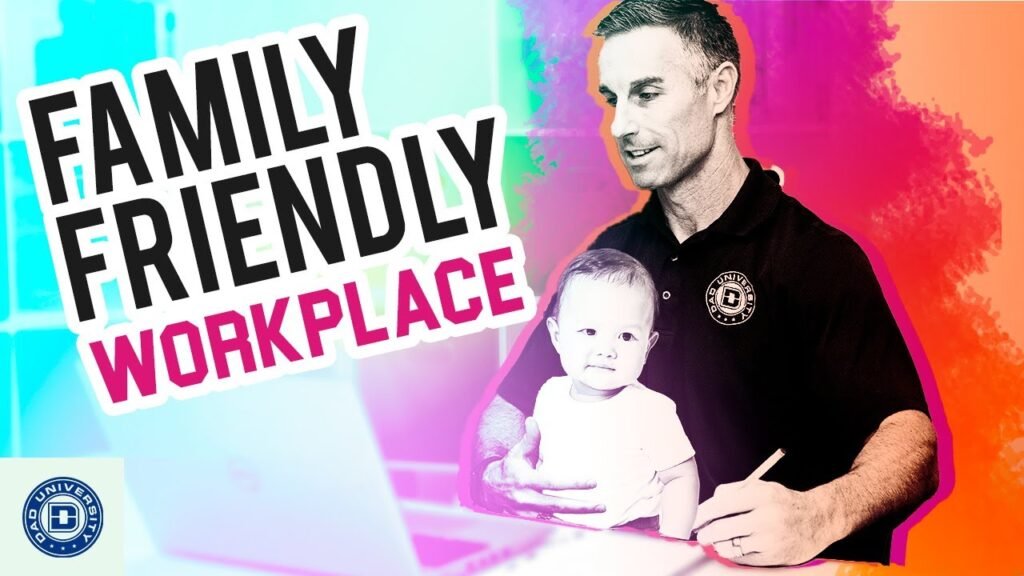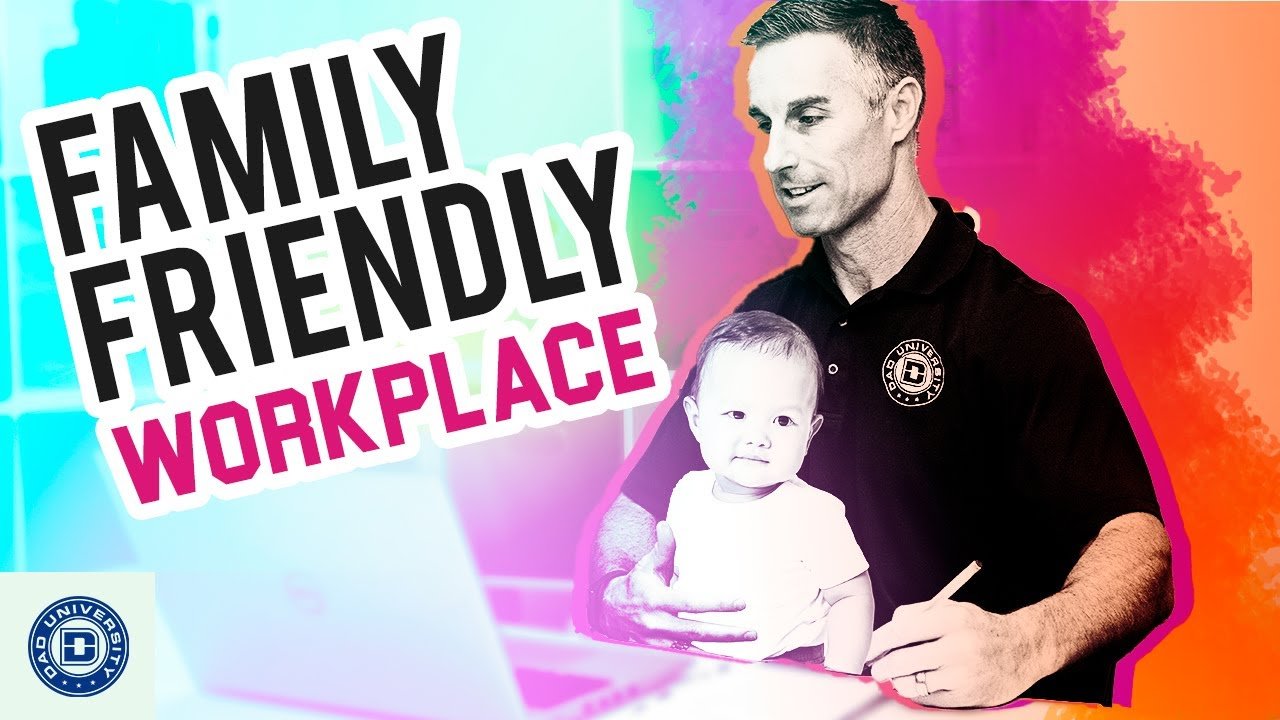Looking to create a more family-friendly workplace? Or maybe you’re an employee seeking out such an environment? Well, this video has got you covered! In “5 Ways Businesses Can Make A More Family Friendly Workplace,” Jason from Dad University shares some helpful tips on how businesses can adopt family-friendly work policies. With just a few small changes, both employees and employers can experience increased happiness, productivity, and a positive impact on the bottom line. Whether it’s through offering parental leave, implementing flexible schedules, providing telecommuting options, offering parenting education, or assisting with childcare, these strategies can create a harmonious work-life balance that benefits everyone involved. So why not take the plunge and make your workplace more family-oriented?
Ways to Increase Parental Leave
Get more companies to offer Parental leave
Parental leave is crucial for new parents to bond with their child and reduce the financial burden they may face. However, only 40 percent of businesses in the U.S. currently offer some form of parental leave. To increase the availability of parental leave, it is important to encourage more companies to adopt this policy. By advocating for legislation that requires parental leave and highlighting its benefits, we can create a culture that values and supports the family.
Encourage companies to be more aggressive in their policies
While it is important to increase the number of companies offering parental leave, it is equally important for those that already offer it to be more proactive and generous with their policies. Companies should consider extending the duration of parental leave and offering flexible options for its utilization. By providing longer and more comprehensive parental leave policies, employers can demonstrate their commitment to supporting their employees’ family life and well-being.
Implement Flexible Schedules
Allow employees to adjust their schedules based on their circumstances
Flexible schedules are one of the easiest and most impactful ways to create a family-friendly workplace. By allowing employees to adjust their work schedules based on their personal circumstances, such as taking care of a sick child or attending important family events, employers can reduce stress and increase work-life balance for parents. This flexibility not only promotes employee satisfaction but also ensures that work responsibilities are met without compromising family obligations.
Create a better work-life balance for parents
Flexible schedules provide parents with the ability to juggle their work and family responsibilities more effectively. When both parents are working, flexible schedules allow them to coordinate and cover specific periods of time, ensuring that parenting duties are shared equally. By offering flexibility, companies can support a healthier work-life balance for their employees, ultimately leading to higher levels of job satisfaction, productivity, and loyalty.
Telecommuting or Working from Home
Provide the option for employees to work remotely
The COVID-19 pandemic has shown that remote work is not only possible but can also be highly effective. For parents, the option to telecommute or work from home provides the flexibility to manage their work tasks while attending to their family’s needs. By offering this flexibility, employers can create a family-friendly environment that allows parents to save time on commuting and allocate more quality time to their family.
Increase flexibility for parents
As kids gradually return to school, the option to telecommute or work from home becomes even more valuable for parents. Eliminating the daily commute not only saves time but also reduces stress and allows parents to be more present for their family. Flexibility in remote work arrangements enables parents to attend to unexpected emergencies or important family events without compromising their work responsibilities.

Offer Parenting Education
Provide classes and education on effective parenting strategies
While parenting education may not be the first thing that comes to mind when thinking about workplace benefits, it can have a significant impact on employees’ well-being. By offering classes and resources on effective parenting strategies, companies can help reduce stress and anxiety for employees who are navigating the challenges of balancing work and family life. Parenting education can also improve communication skills and foster a positive work environment.
Reduce stress and anxiety for employees
Parenting is a demanding role that can often cause stress and anxiety. Providing parenting education in the workplace equips employees with the knowledge and skills to navigate the challenges they face. By reducing stress and anxiety, companies can improve employee well-being, resulting in increased productivity and decreased absenteeism. Additionally, investing in parenting education demonstrates a commitment to the holistic development and happiness of employees.
Child Care Assistance
Provide benefits or reimbursements for child care
Child care can be a significant financial burden for working parents. To create a more family-friendly workplace, companies can provide benefits or reimbursements for child care expenses. This not only eases the financial strain on parents but also reinforces the company’s support for their employees’ family life. By helping to alleviate the costs of child care, employers can attract and retain talented employees and promote a positive work environment.
Offer on-site daycare facilities
Another way to support working parents is by offering on-site daycare facilities. Having child care available at the workplace provides parents with peace of mind, knowing that their child is safe and nearby while they focus on their work. On-site daycare facilities also promote a sense of community among employees and can create a more cohesive and supportive work environment.
Importance of Family-Friendly Workplace
Improve loyalty and productivity
Creating a family-friendly workplace fosters employee loyalty and commitment. When employees feel supported in their family life, they are more likely to be engaged and dedicated to their work. By prioritizing the well-being of employees’ families, companies can strengthen loyalty and increase productivity. Employees who feel valued and supported are more likely to go above and beyond in their roles, resulting in enhanced organizational performance.
Enhance overall employee happiness
A family-friendly workplace contributes to the overall happiness of employees. When employees have a positive work-life balance and feel supported in their family commitments, their overall well-being improves. Happy employees tend to be more engaged, motivated, and satisfied with their work, leading to higher levels of productivity and success for the company as a whole.
Benefits of Work-Life Harmony
Allows employees to be focused and productive
When employees achieve work-life harmony, they are better able to focus on their work tasks and be productive. By providing the necessary support and flexibility, employers enable employees to allocate their time and energy efficiently, ensuring that important work responsibilities are met while still prioritizing their family obligations. Work-life harmony not only benefits employees but also contributes to the success and productivity of the organization.
Reduces stress and conflict
Work-life conflict can lead to stress and dissatisfaction among employees. However, by promoting work-life harmony, companies can minimize these conflicts and reduce stress levels. Employees who feel supported in their personal lives are less likely to experience the negative effects of stress, such as burnout and decreased job satisfaction. By fostering an environment that values work-life harmony, employers can create a culture of well-being and contentment.
Employee Perspectives
Experiences of working in a family-friendly environment
Employees who have the opportunity to work in a family-friendly environment can speak to its positive impact firsthand. They can share personal anecdotes and stories that highlight how family-friendly policies have improved their work-life balance, reduced stress, and allowed them to be more present for their families. Hearing from employees about the value and benefits of a family-friendly workplace can inspire other companies to adopt similar policies.
Feedback from employers who offer family-friendly policies
Employers who have implemented family-friendly policies can provide valuable insight into their effectiveness and the benefits they have observed. They can share data on employee satisfaction, productivity, and retention rates before and after the implementation of these policies. By showcasing the positive outcomes and feedback from employers, other businesses can gain inspiration and guidance on how to create a more family-friendly work environment.
Spread the Message
Encourage sharing and spreading the importance of family-friendly workplaces
Creating a family-friendly work environment requires a collective effort. Encouraging employees, employers, and stakeholders to share their experiences and advocate for family-friendly policies can raise awareness and promote change. Sharing success stories and information about the benefits of a family-friendly workplace on various platforms, such as social media or industry events, can inspire others to take action.
Gain support from others to create a more family-friendly work environment
It is important to engage and gain support from various stakeholders, such as community leaders, policymakers, and industry influencers, to create a more family-friendly work environment. By collaborating with these individuals and organizations, it becomes possible to enact changes at a larger scale. By rallying together and spreading the message of the importance of family-friendly workplaces, we can create a movement that leads to lasting change.
Conclusion
Working in a family-friendly environment benefits both employees and employers alike. By implementing policies and practices that support employees’ family life, organizations can improve loyalty, productivity, and overall happiness. It is crucial for companies to offer parental leave, establish flexible schedules, provide telecommuting options, offer parenting education, and support child care assistance. By emphasizing the importance of work-life harmony and sharing employee perspectives, we can spread the message and encourage more businesses to create family-friendly workplaces. By prioritizing the well-being of employees and their families, we can foster a more inclusive and supportive work culture that promotes a better work-life balance.

